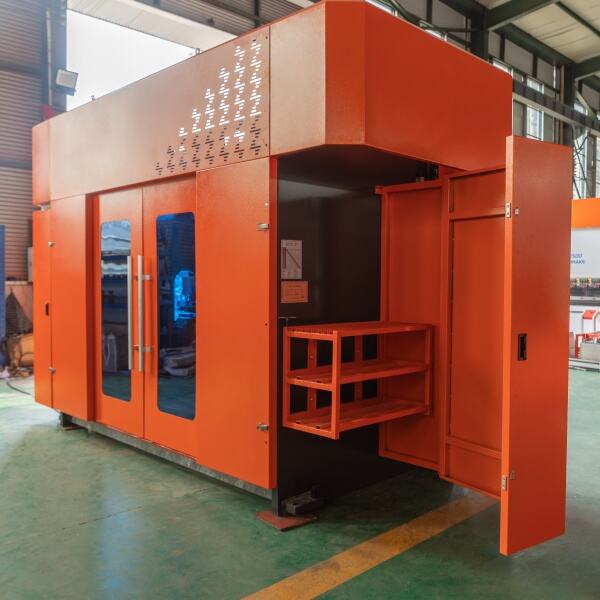Världen av metallbearbetning har genomgått en teknologisk revolution, där datorstyrd nummerisk kontroll (CNC) har varit i centrum. Om du inte har hört talas om eller inte känner till denna teknik, så har du en överraskning i beredskap, eftersom denna teknik har förändrat industrin. Metallbearbetning skulle inte vara vad det är idag utan påverkan från CNC, så vi kommer att dyka in i dess historia med ett öga på framtiden.
När varje civilisation tog ett kliv framåt bidrog CNC:s historiska betydelse till en industriell boom för var och en av dem. Det som skiljer denna teknik från sina föregångare är att den inte är beroende av manuellt arbete. CNC-maskiner kan arbeta i blixtens hastighet och erbjuda överlägsen precision, tack vare dess datoriserade programmeringsgränssnitt. Denna automatiserade utrustning är så avancerad att den till och med kan konstruera komplexa scheman som våra händer inte kan åstadkomma, och därmed för alltid eliminera möjligheten till mänskliga fel. Därmed har industrier som flyg, skodon, bilindustrin, medicin och många andra fått möjlighet att leverera stora kvantiteter produkter av hög kvalitet för att möta kundernas efterfrågan.
Introduktionen av CNC-teknik i bearbetningen av metaller är ett av de mest fördelaktiga områdena som har ökat processernas effektivitet. CNC-maskiner kan arbeta kontinuerligt utan paus, vilket resulterar i högre produktionsnivåer. Dessutom kan de programmeras att utföra olika funktioner i tur och ordning, vilket förenklar produktionsflödena. En sådan effektivitet förbättrar tillverkarnas vinstmarginaler eftersom kostnaderna för ineffektivitet, såsom arbetskraft och materialspill, är låga eller minskade. Det är ur denna synvinkel som CNC-maskiner har blivit de mest avgörande anordningarna i modern tillverkning, eftersom företag strävar efter att förbli konkurrenskraftiga.
Dessutom är möjligheterna i metallbearbetningsoperationerna för en CNC-maskin ganska många. Dessa enheter kan utföra ett stort antal operationer, som bland annat inkluderar fräsning och svarvning, laser- och plasmaskärning på olika material såsom stål, aluminium och titan. Detta säkerställer att CNC-tekniken är lämplig både för mindre verkstäder och för massproduktionsprocesser. De gör det möjligt för företag att växla mellan olika arbeten med liten påverkan på verktygen, vilket ökar arbetsflexibiliteten. Denna egenskap är särskilt fördelaktig för företag som behöver snabba och varierade förändringar av prototyper, eftersom en CNC-maskin lätt kan göra justeringarna efter behov.
Det finns ett antal nya trender inom CNC-teknologier och metallbearbetning som är värt att notera när vi vänder våra blickar mot framtiden. Utvecklingen av tekniker som riktas mot begränsningarna i CNC IoT och AI är redo att ytterligare utveckla CNC-maskiners kapaciteter. Anslutna CNC-system i smarta fabriker kommer att möjliggöra insamling och analys av data, prediktivt underhåll samt att automatisk beslutsfattande kan utföras på plats. En av sidorna i utvecklingen av smart tillverkning är ökad produktivitet tillsammans med förbättrad kvalitetskontroll så att slutgiltiga produkter uppfyller krav som är ännu strängare än industristandarder.
Genom introduktionen av avancerade tekniker har metallbearbetningen revolutionerats, särskilt användningen av CNC-maskiner som har förändrat metallbearbetningens lanskap. Särskilt CNC-teknik har nu blivit en byggsten i modern tillverkning i den postindustriella eran, tack vare den förbättrade precisionen, effektiviteten och mångsidigheten som erbjuds till användarna. Processer som använder CNC-maskiner kommer fortsatt att symbolisera industrins utveckling och sofistikerade nivå. Ännu mer när plast är synonymt med att inte acceptera att vara tvåa, och när hela världen strävar efter att minska kostnaderna. Så, att omfamna CNC-teknik är inte en option utan en nödvändighet om någons mål är att lyckas inom metallbearbetningsindustrin.



